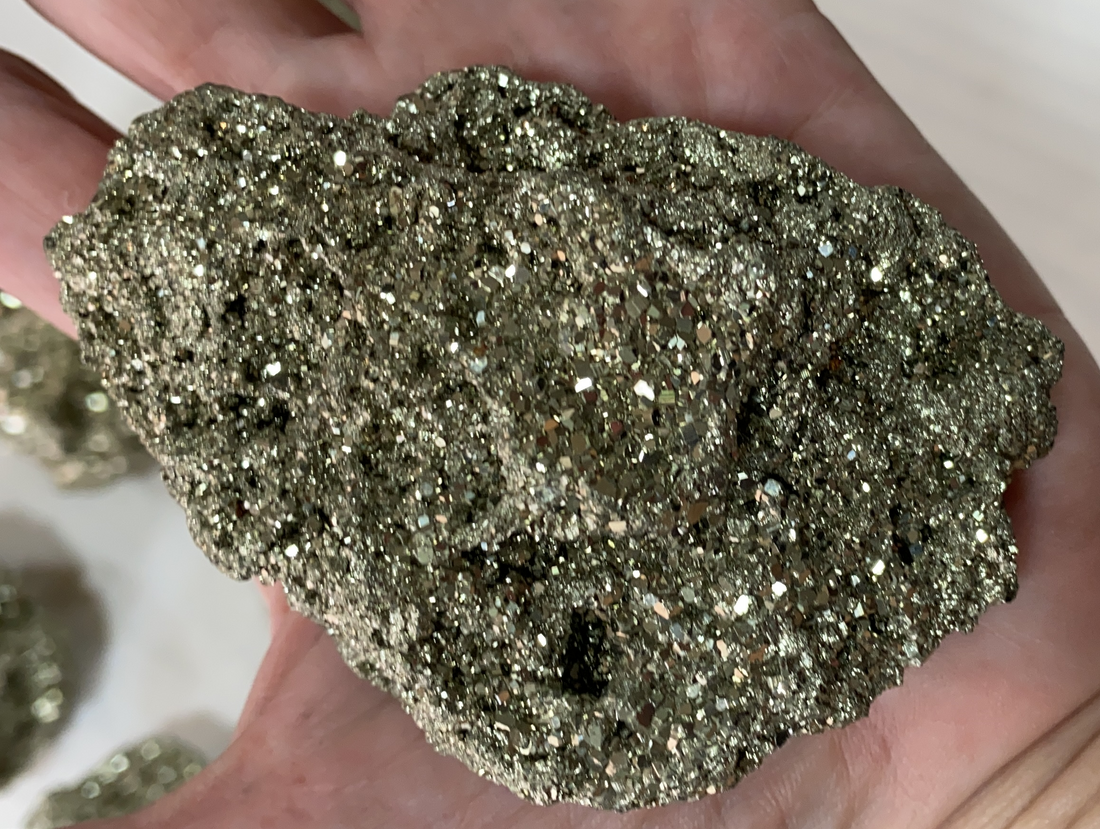Most minerals are safe to handle, but others need some special care due to their composition.
When we decide to have a mineral, a gem, a crystal or a stone, as we commonly say, we need to keep in mind its physical and chemical properties. It's okay that they are beautiful, decorative and powerful, but some can be toxic or even radioactive and, therefore, we need to be careful when handling them. Yes, there are toxic crystals and those that can pose some risk, depending on how we use them.
In general, water-soluble stones should be given extra care. It is worth remembering that gemstones that can become toxic because they include aluminum and some other elements considered toxic, the dose necessary to induce a toxic reaction is exceptionally high. So, as long as you don't eat rock dust, toxicity from these rocks is unlikely.
Some gemstones composed of elements such as aluminum, lead, copper, mercury and arsenic are highly toxic to humans. Crystals such as aquamarine, emerald, chrysocolla, malachite, amazonite, azurite and turquoise contain traces of copper in their composition and, therefore, should not be used in elixirs.
Morganite, ruby, garnet, tourmaline, moonstone, sodalite, topaz, mica, sunstone, labradorite, cat's eye, sapphire, Dalmatian jasper, kyanite and Turquoise contains traces of aluminum and is therefore not recommended for elixirs.
Others rust and release substances when exposed to water for a long period of time, such as magnetite, black kyanite and hematite. Tiger's eye in its fibrous form and chrysotile contain asbestos and therefore should not be used as an elixir. Using them polished is not harmful to your health.
There are some that contain sulfur in their composition, such as pyrite and lapis lazuli. Due to this characteristic, they should not be used in elixirs, as they become toxic. Additionally, lapis lazuli is porous and can break down in water.
Pyrite itself is not harmful to human health, but it is recommended to be used with caution. As it is an iron disulfide, it should not be kept in contact with water or placed next to charcoal. In the first action it can become sulfuric acid and in the second, it can self-combust.
Selenite, gypsum, calcite, kyanite, fluorite and desert rose dissolve in contact with water and release fragments. Therefore, they should not be used in elixirs either.
Galena is a mineral full of silvery shine that enchants, but it is practically composed of lead. Therefore, always after handling a galena, wash your hands and do not use it in direct contact with your body.
Vanadinite is also full of shine and attracts everyone's attention. Found near lead ore regions, it may contain this mineral. Furthermore, it contains vanadium in its composition and precisely for this reason, it should not be used in elixirs and handling should be avoided.
Fluorite and malachite attract with their intense play of colors, but one contains fluorine and the other contains copper and therefore should only be used in its polished form, when there is no risk when handling it.
On the other hand, pearls, mother of pearls and abalone, considered organic gems, can contain bacteria and water pollutants and, therefore, we must know their origin, in addition to washing them well before using them.
As we quickly saw, enthusiasts and collectors should learn about the toxicity of gemstones as it relates to normal handling, cutting, and ingestion. We must remember that the information you seek about stones and crystals must be from sources recognized by science, because there is a bit of misinformation and exaggerations published on some websites. One of these cases is fluorite, which appears in several places as being toxic due to fluorine, but we must remember that as a gas, fluorine is very toxic. There are health risks associated with prolonged exposure to large amounts of fluorite in or near mining environments, however, polished fluorites are inert and wearing or holding fluorite gemstones or jewelry does not pose any health risks.

